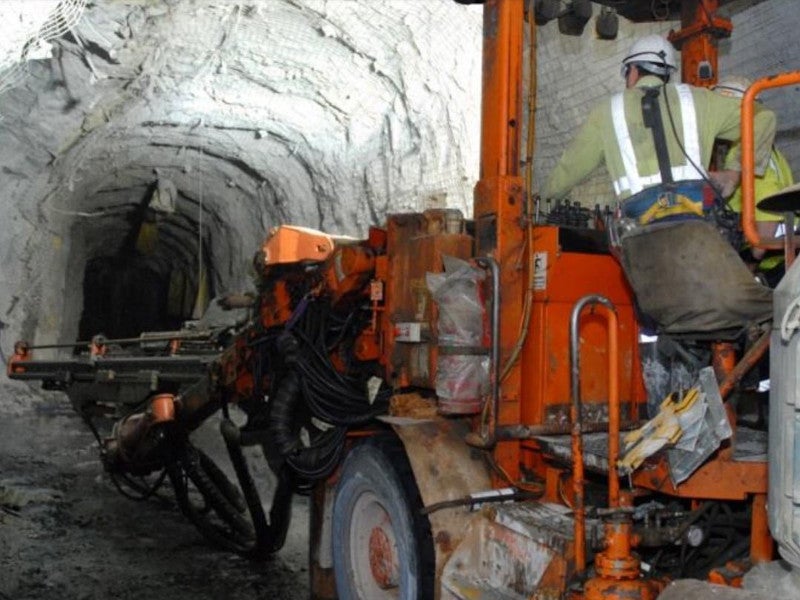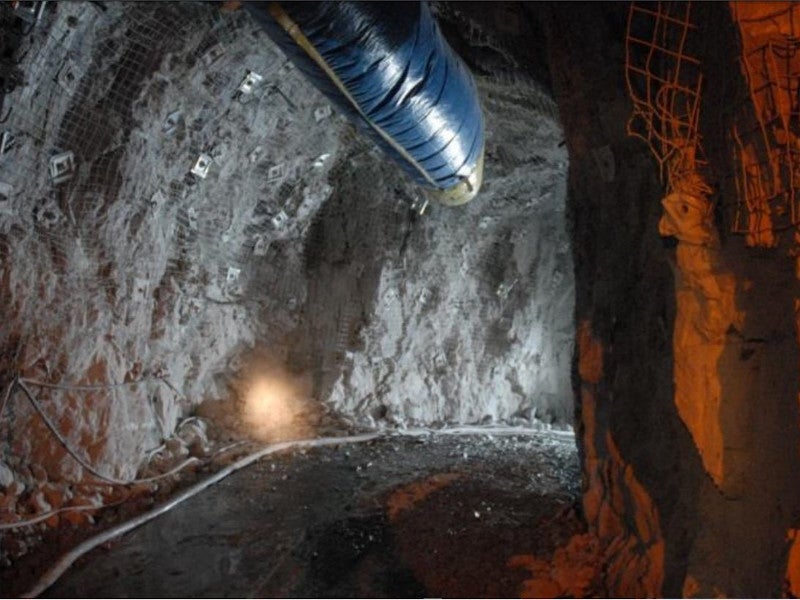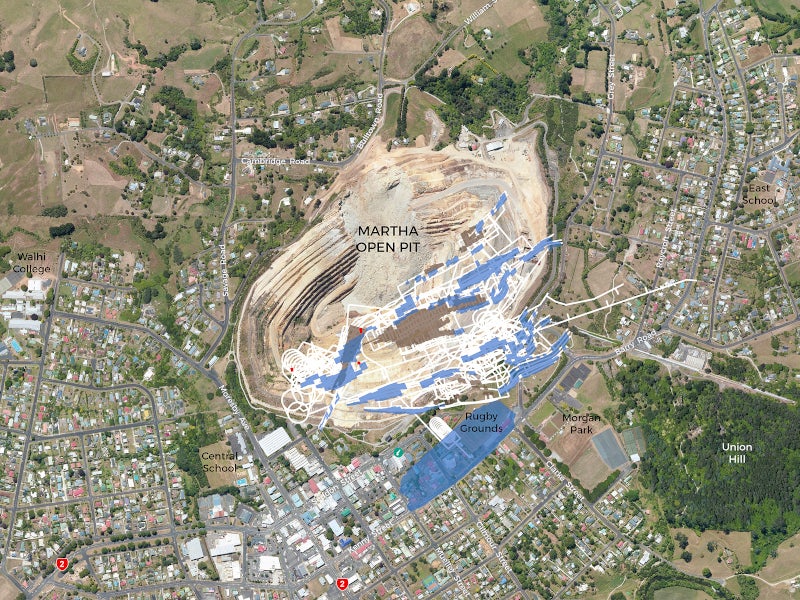The Martha underground project is a gold project in the Waihi gold mine in the North Island of New Zealand.
The project is operated by OceanaGold (New Zealand), a 100% owned subsidiary of OceanaGold Corporation.
The Martha underground mine was identified beneath the Martha open pit mine. The project is expected to increase the mine life of Waihi by more than ten years.
Drilling at the Martha underground commenced in 2017 and the company received the permit to construct and operate the mine in February 2019. Initial development of the project began in the second quarter of 2019 while production of the first gold is expected in the second quarter of 2021.
The project is anticipated to generate up to 350 full-time jobs.
Martha underground project location
The Martha project is located within the township of Waihi while the project infrastructure, including the processing plant, waste rock embankments and water treatment plant, is located 2km away from the mine site.
The Waihi mine is situated in the Hauraki District in the Waikato region.
The Martha underground mine will be initially accessed via the Correnso underground mine, using the Favona Portal, along with the development drives constructed for the Trio and Favona underground mines.
Martha underground project reserves
The underground project is estimated to contain indicated resource of 4.92Mt graded at 5.2g/t with 824,000oz of gold and inferred resource of 4.09Mt graded at 4.66g/t with contained gold of 614,000oz, as of December 2019.
Martha underground project drilling details
The 2020 drilling programme for the project includes the plan to drill 25,000m to advance resource definition.
Infill and extensional drilling at the mine led to an additional 440,000oz of gold, along with an increase in average grade of indicated and inferred resources.
The Martha underground targets will be drilled using four diamond rigs from the two underground drill drives located below the Martha open pit for further discovery and addition of resources during the ramp-up phase.
Mining at Martha underground project
The Martha underground mine will use a combination of different mining methods due to the presence of different ore sources, including new ore development, remnant stopes, backfilled remnant stopes, and Avoca virgin stopes.
The project will include underground mining in and around historical underground workings underneath and near the Martha pit and in the Rex orebody.
The mining methods will include stope excavations with a high level of stability. For Modified Avoca, the stopes will be filled immediately upon completion, whereas stoping will be conducted on a continuous basis for Avoca.
In areas encountering historical open stopes, the voids will be filled with suitable materials before beginning stoping to ensure the recovery of adjacent resources.
Blasting will follow sampling and mapping in areas requiring loosening of rock before the commencement of excavation by hydraulic diggers while the remaining areas will be mined using bulldozers. The ore and waste rock will be mined using excavators and loaded onto trucks, while the ore will be transported by dump trucks to stockpiles at the processing plant. The waste rock will be stored for reuse as backfill.
The mining equipment will include haulage trucks such as CAT AD45B, Sandvik DD421 jumbos, load hauling dumps, production drills, graders, shotcrete mixers, and mobile crushers.
Processing at Martha underground project
A tripper and stacking conveyor at the processing plant will direct the ore to the stockpile, while the rock will be sent to a truck loading facility.
The processing facility includes a conventional carbon-in-pulp gold and silver processing plant with a capacity to process 1.25Mt of ore annually.
The conveyor will discharge the ore onto a coarse ore pad and the coarse ore stockpile material will be fed into a semi-autogenous grinding mill and secondary ball mill circuit.
Water and limestone will be added to the ground ore to form a slurry which will be pumped through cyanide leach and carbon adsorption tanks for dissolution of the gold and silver. It will then be adsorbed onto the activated carbon, followed by the removal of carbon from the circuit. The remaining slurry will be pumped to the tailings storage area.
The carbon containing the gold and silver will undergo chemical washing and the removed gold and silver will be recovered using electrowinning process and converted into bullion bars. The slag from the smelting process will be returned to grinding circuits.






